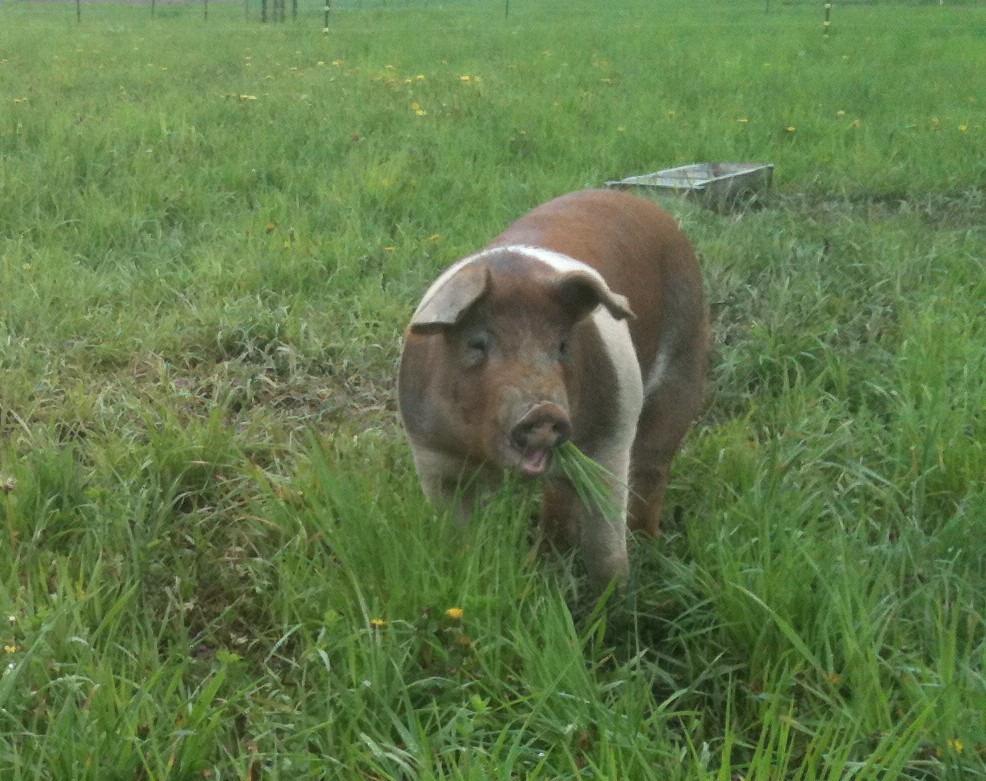
"Good Morning!!"
Here's some of our Belted Duroc's enjoying their lush 2011 spring pasture
Even our Pigs are GRASS-FED!
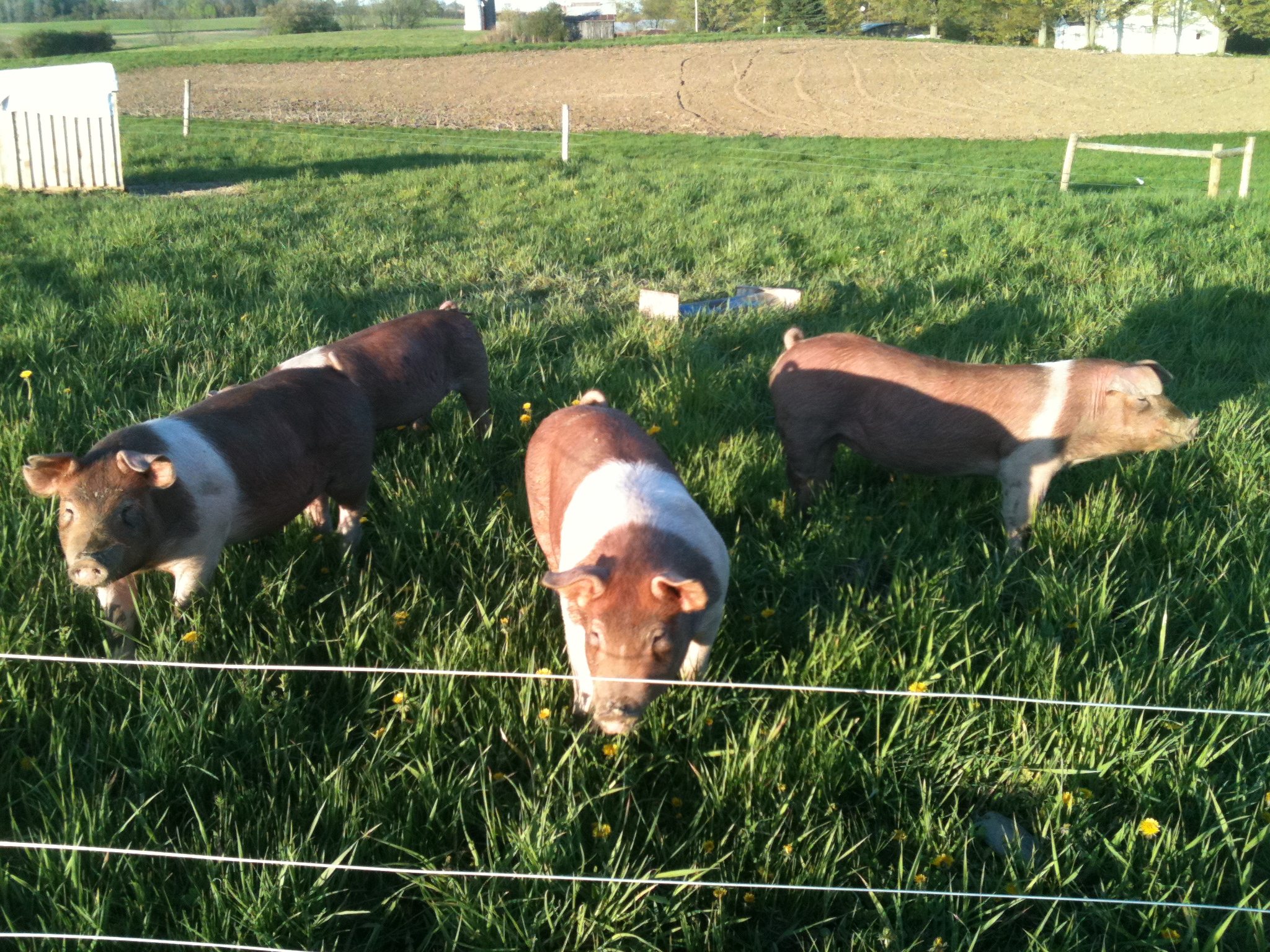
We are members of the National Swine Registry.
&
The UNITED DUROC SWINE REGISTRY
(Herdmark: TKFF )
We're Certified Pork Producers, educated by the National Pork Boards PQA PLUS Program.
We custom mix our own pig feed.
The Primary ingredients are
ground Corn, Oats & Alfalfa hay
NO SOY or GLUTEN is added!
Even when it's 20 degrees outside, they love running around rootin' up stuff!
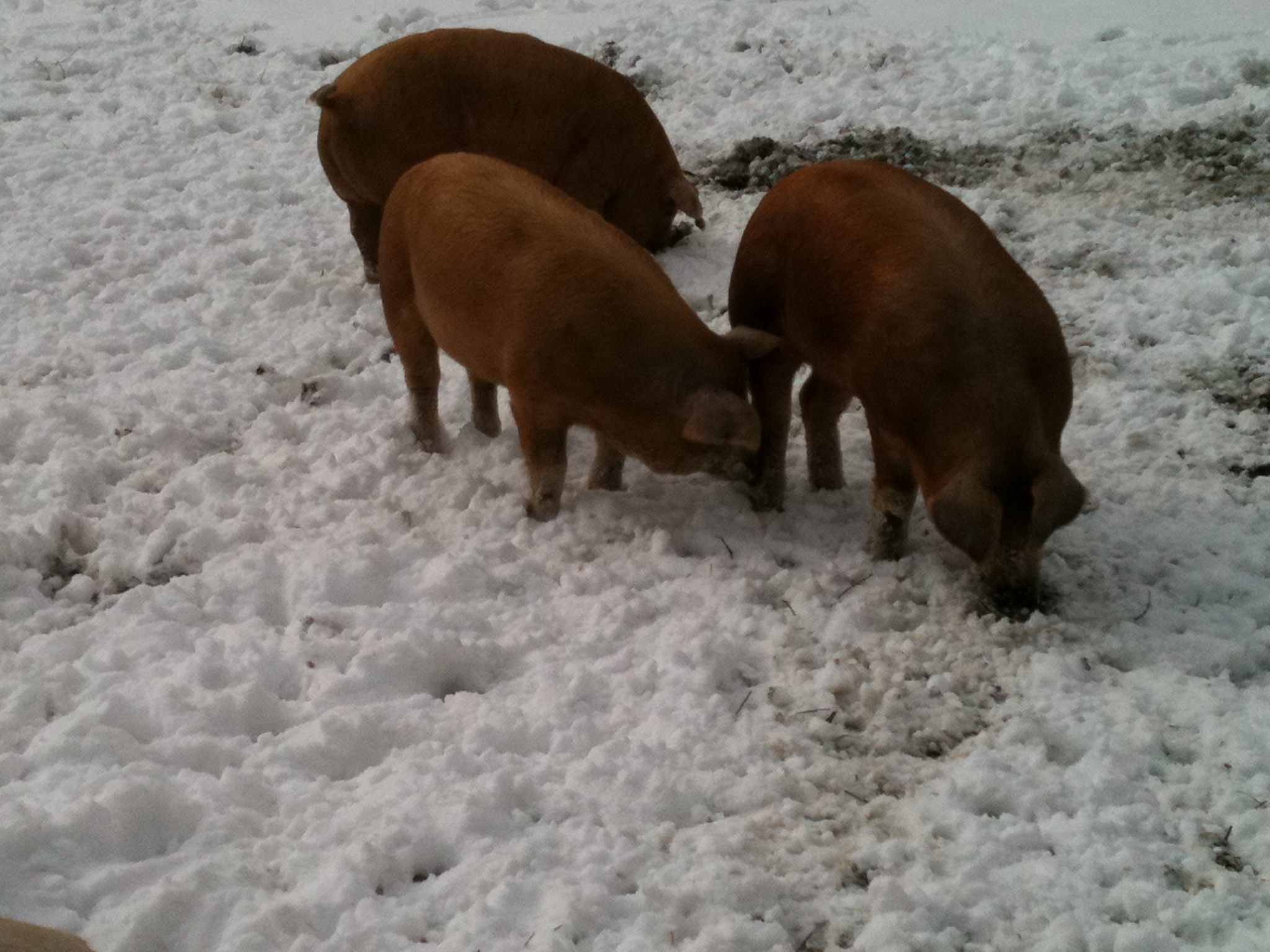
History of the Duroc Breed
Durocs are red pigs with drooping ears. They are the second most recorded breed of swine in the United States and a major breed in many other countries, especially as a terminal sire or in hybrids. Duroc's can range from a very light golden, almost yellow color, to a very dark red color that approaches mahogany like ours at The Kuhn Family Farm.
In 1812, early "Red Hogs" were bred in New York and New Jersey. They were large in size. Large litters and the ability to gain quickly were characteristics Duroc's possessed from the beginning. The foundation that formed today's "Duroc" was comprised of Red Duroc's from New York and Jersey Reds from New Jersey.
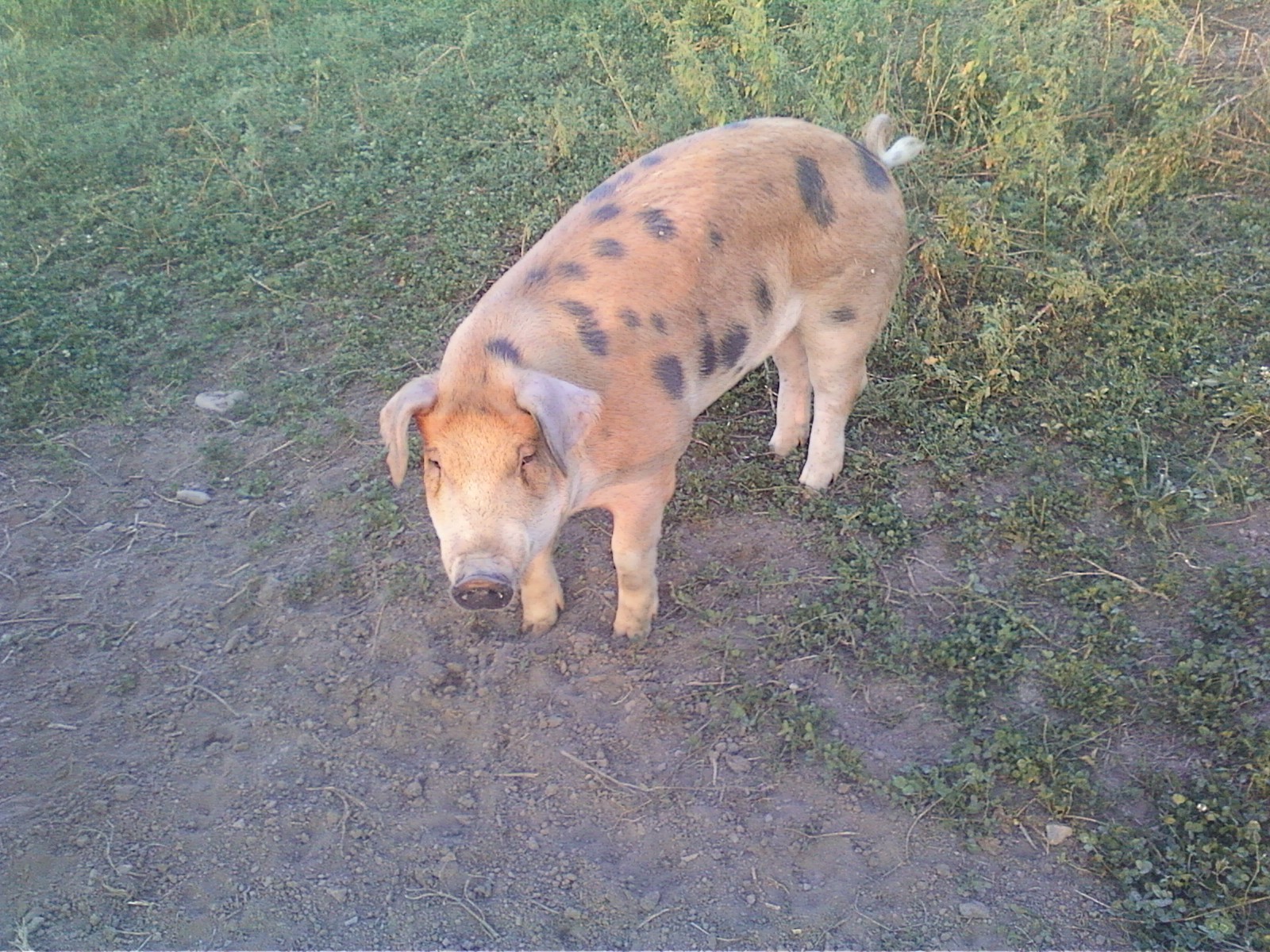
In 1823, a red boar from a litter of ten, whose parents were probably imported from England, was obtained by Isaac Frink of Milton in Saratoga County, New York, from Harry Kelsey. Kelsey owned a famous trotting stallion, Duroc, and Frink named his red boar in honor of the horse. This boar was known for his smoothness and carcass quality.
This is one of our DUROC-Cross Pig's
His progeny continued the Duroc name and many of them inherited his color, quick growth and maturity, deep body, broad ham and shoulder, and quiet disposition. The Duroc was smaller than the Jersey Red, with finer bones and better carcass quality. Beginning in the early 1860s, Durocs were made from a systematic blending of the two very different strains. This produced a moderate hog that was well suited for the finishing abilities of the Cornbelt farmer.
At the 1893 Chicago World's Fair, Durocs gained wide popularity at the first successful Duroc Hog Show. This was only the beginning of the Duroc popularity and success which continues today.
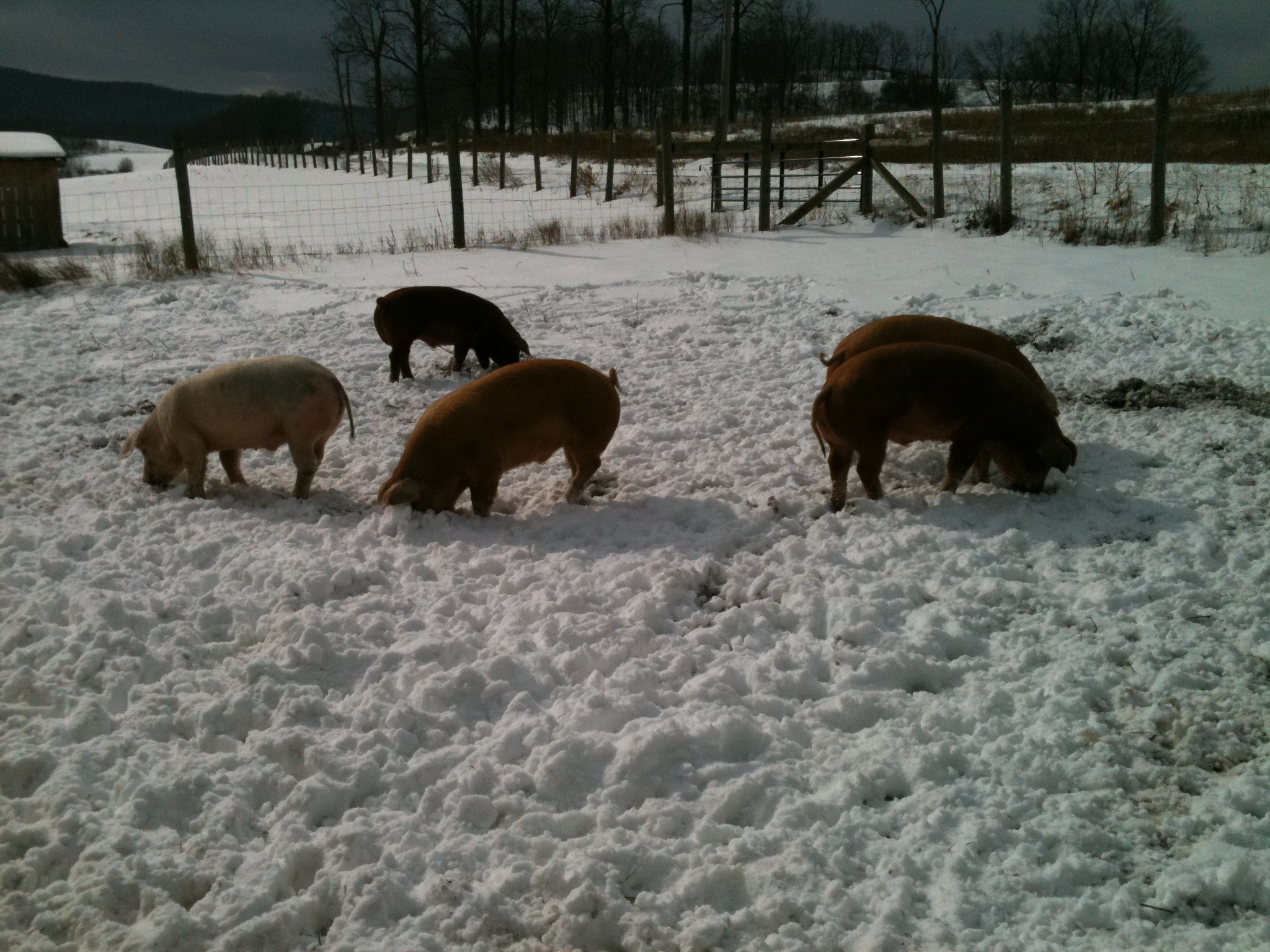
The first organization for the purpose of recording, improving, and promoting Red Hogs was the American Duroc-Jersey Association which was established in 1883. No other breed of hogs made more progress, in terms of numbers recorded, over a period of years. As a result, numerous other recording organizations were formed to accommodate the growth. In 1934, all the groups were united to form one organization, named the United Duroc Swine Registry, for the sole purpose of recording and promoting the Duroc breed.
Our DUROC-Cross Pig's Love SNOW too!
When the U.S. population moved westward, the Duroc and many noted breeders moved westward as well. Most of the breed improvement after the formation period took place in Ohio, Kentucky, Illinois, Indiana, Iowa and Nebraska. Durocs have become a sire of choice to the American farmer. The climb of the breed has been accelerated by many distinguished accomplishments in prolificness and longevity in the female line and lean gain efficiency, carcass yield, and product quality as a terminal sire. The purebred Duroc is distinguished for breed potency in today's picture of swine improvement and holds forth inviting promise of future usefulness and value.
Durocs were identified as a superior genetic source for improving eating qualities of pork in the recent National Pork Producers Council Terminal Sire Line Evaluation.
Their advantage in muscle quality combined with their well-established ability to grow fast has positioned the Duroc breed as an outstanding terminal sire choice.
Our Pig's have 24 hour a day access to the great outdoors.
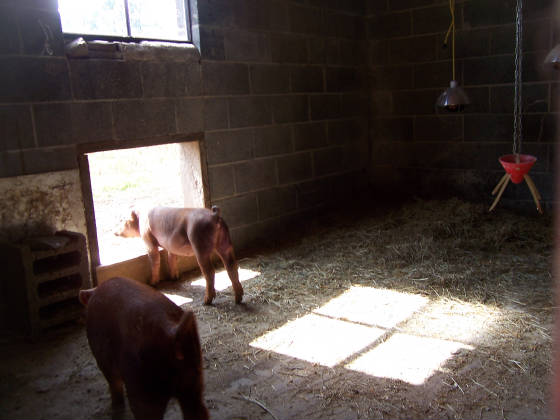
.....and 24 hour a day access to the indoors!
If you wouldn't want to be outside in 90 degree or -10 degree temperatures, why would they?
They do however LOVE running around in the SNOW!!